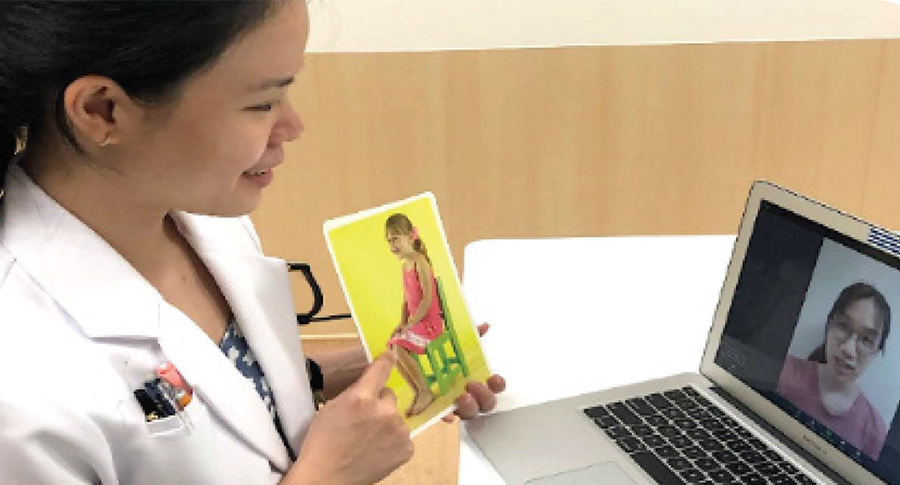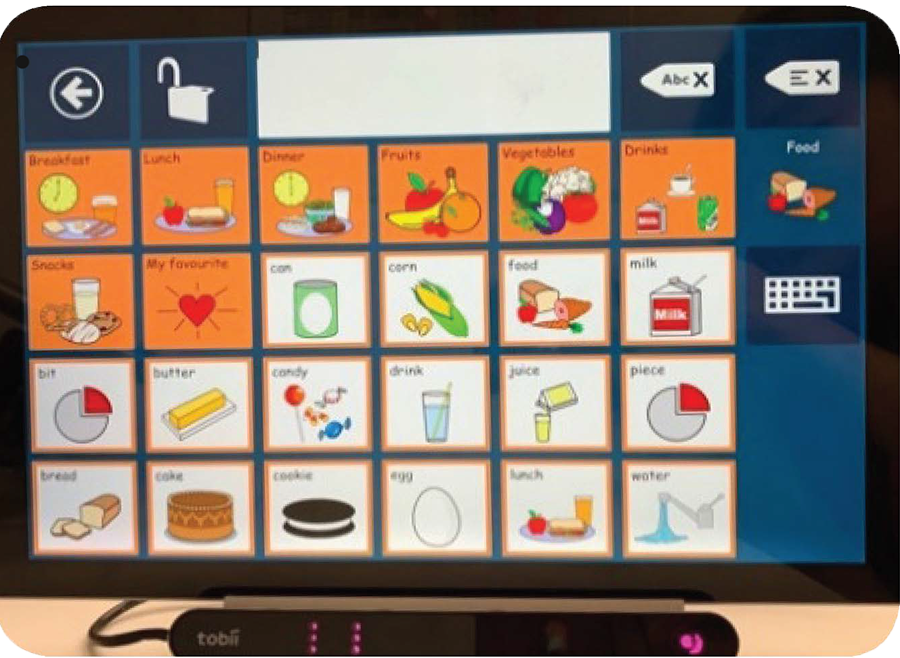Gesticulating furiously and pointing to a photo of the coffee on the menu, Mr R erupted, ''Telephone ... oolong .... tea!" Confused, the waitress reaffirmed his choice, "Oolong tea ... give me a minute." Disappointed, the coffee-lover walked away with his cup of tea.
The above is possibly a snippet of what people with aphasia face daily. Aphasia is an acquired communication difficulty caused by injury to the brain. Common causes include stroke, brain tumours or brain trauma.
In Singapore, according to the Singapore Stroke Registry Report 2018, more than 8,000 adults suffered from stroke in 2018 and about 1/3 of these stroke survivors are diagnosed with aphasia. People with aphasia suffer impairment in their language processing ability. This means that they may have difficulty understanding words, and struggle to speak, read and write. Generally, they may participate in fewer social activities, become more withdrawn and experience a poorer quality of life.
People with aphasia do not have an impaired level of intelligence. However, they may face difficulties in understanding words and conversations, thinking of and saying the right words, reading and understanding text, and writing and spelling words or sentences. In severe cases, people with aphasia may no longer be able to communicate. They may even lose the ability to understand common gestures we use.
Types of Aphasia
The severity of aphasia often depends on the extent and location of brain damage, as well as other co-morbidities the person has. Aphasia is often classified by fluent or non-fluent types, and largely corresponds to the area of brain injury.
There are at least 8 different types of aphasia - of which global aphasia is the most severe form, leaving the affected person with little to no words at all. They may no longer be able to understand or speak any words. They may also not be able to follow eye contact or comprehend common gestures. For some severe cases, they may lose their ability to recognise object function - for example, not knowing how to use a spoon or cup.
Another form of aphasia, Wernicke's aphasia, is characterised by fluent, empty speech with copious verbalisations. Persons with this condition often have significant difficulties in their ability to comprehend, and have reduced awareness of their difficulties. An example of what they may say is: "Oh sure, go ahead, any old think you want. If I could I would. Oh, I'm taking the word the wrong way to say, all the barbers here whenever they stop you it's going around and around ... "
On the other hand, Broca's aphasia is characterised by non¬fluent, effortful speech with many pauses and interjections. People with this type of aphasia may be able to speak single words or in groups of two to three words-often only eliciting the most essential words. Very often, their understanding of language may still be largely intact and they are highly aware of their difficulties. An example of what they may say is: "Drink ... um ... drink, table ... "
Clinical interventions
While there is currently no cure for aphasia, speech therapists can aid a person's recovery with intervention and education. After understanding a person's medical, social and educational history, a speech therapist will assess his/her language difficulties. Depending on the severity of the language difficulty, the speech therapist will begin intervention which can be impairment-or compensatory-focused, or both. This can be done through face-to-face interactions, or even via tele-rehabilitation. Evidence has shown that tele-rehabilitation can be on-par with face-to¬face therapy sessions!
 Tele-rehabilitation session for language therapy.
Tele-rehabilitation session for language therapy.
Some impairment-focused interventions target at people who have difficulties finding words during conversations. These therapies may utilise music, rhythms, games, gestures or even technology. There are downloadable apps such as Tactus Therapy or Constant Therapy, which allow people with aphasia to get additional practice when working on their language difficulty.
Compensatory-focused interventions largely involve the use of communication aids or training communication partners to better support people with aphasia. Just as how people with difficulty walking may require crutches or a wheelchair to help them get around more easily, people with aphasia may also require "communication crutches" to help them convey their message better. Communication aids include picture or alphabet charts that are printed on hardcopy. For those who were previously tech-savvy, these charts can also be customized on iPads and tablets.
 A communication chart on the Surface Pro.
A communication chart on the Surface Pro.
Helping someone with Aphasia
It is often crucial that a person with aphasia has main communication partners who are trained to communicate with him/her in order to reduce the amount of frustration he/she may experience in daily conversations. Conveying thoughts and ideas that most would not find difficult to express may prove to be a gargantuan task for people with aphasia. These include what ingredients he/she needs for a cooking recipe, or where he/she wants to go for the weekend.
If you meet someone who seems like he/she has difficulty getting his/her words out, remember to be patient. Speak to the person in simple, concise sentences, and do not talk down to the person. Give the person time to respond and do not assume what that person wants to say. Instead, you can try gestures, written words or drawings to help him/ her understand and express his/her thoughts better. If the person still has significant difficulties communicating, you can even try narrowing down to "yes" or "no" questions. Encourage the person to continue talking and include him/ her in group conversations as much as possible.
People with aphasia and their families can join Aphasia SG, which organises Chit Chat Cafe on every 4th Saturday of the month. Since the onset of the COVID-19 pandemic, Chit Chat Cafe has moved on line, but the organisation continues to organise engaging activities over Zoom every month.
If you would like to find out more about the condition by other means, why not check out the documentary My Beautiful Broken Brain (available on Netflix)? Film director Lotje Sodderland was afflicted with aphasia
when she had stroke at just d34 years of age, and initiated this film in 2014. The film follows Sodderland after her stroke, poignantly depicting her daily struggles and frustrations with aphasia. As she aptly commented in an interview regarding her journey, "Communicating became a guessing game of charades - it was fun at first, but it soon got frustrating for some people. Patience is definitely the key."